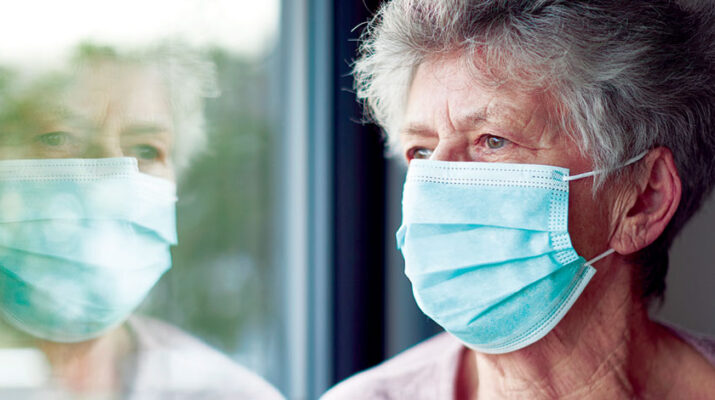Social isolation, loneliness hitting seniors especially hard
Megan Plete Postol

The ill effects of social isolation are hitting seniors especially hard as COVID-19 restrictions continue to keep people apart.
A new study released from the National Academies of Sciences, Engineering, and Medicine reports that more than one-third of adults aged 45 and older are feeling lonely, and nearly one-fourth of adults aged 65 and older are considered to be socially isolated.
Isolation is measured in terms of how much social contact a person has, whereas loneliness is the consequence of an unsatisfying connection with others or lack thereof.
Older adults are at increased risk for loneliness and social isolation because they are more likely to have factors that include living alone, the loss of family or friends, chronic illness, and hearing or vision loss. The current pandemic is exacerbating mental health issues.
“People who already feel lonely, isolated, unloved, or different in any way are more likely to experience the negative effects of isolation,” said Dr. Jodi Mullen, founder of Integrative Counseling Services PLLC in Oswego. “This would include the elderly and the infirmed. Isolation and lack of social and emotional stimulation also affects children in different ways based on development and the stability and consistency of relationships in their lives. Children with instability and inconsistency in any areas of their lives are more apt to experience negative mental health implications of loneliness and isolation.”
Social isolation is not the way humans are wired to live and thrive, Mullen points out.
“We are social animals,” she said. “We understand who we are, what is important to us, and what helps and hinders us from our interactions with others. Our nervous systems are set up for this; we are set up to be able to respond to others, particularly facial expressions and touch.
Major disconnect
“When we are isolated we don’t have those opportunities to learn about ourselves, reflect on our feelings, behaviors or thoughts; therefore, we are left with limited resources. Our default system is to listen to our self-talk. Typically, our self-talk reverts to our inner critic versus our inner coach.
“Our inner critics are mean and judgmental. Mental health is susceptible to the barrage of these negative and unacceptable messages particularly without the alternative messages that we get from others.”
The NASEM report indicated that other groups at risk for negative effects of social isolation are vulnerable older adults, including immigrants; lesbian, gay, bisexual, and transgender populations; minorities; and victims of elder abuse.
Although most people are not connecting in-person, they can still be on the lookout for cues that indicate deteriorating mental health and loneliness in loved ones.
“I would be concerned about dramatic changes in appearance (including weight gain or loss), new or increased use of alcohol or substances, and/or personality,” Mullen said. “If you are reaching out to someone who chooses to isolate when there are opportunities to connect, that would be a red flag as well.”
There are some actions that can be taken to mitigate the negative effects of social isolation and loneliness.
“Be creative about connecting,” Mullen said. “Reach out to others and extend the invitation for them to connect to you. Be a connection detective — seek out ways to connect and re-connect to others.”

